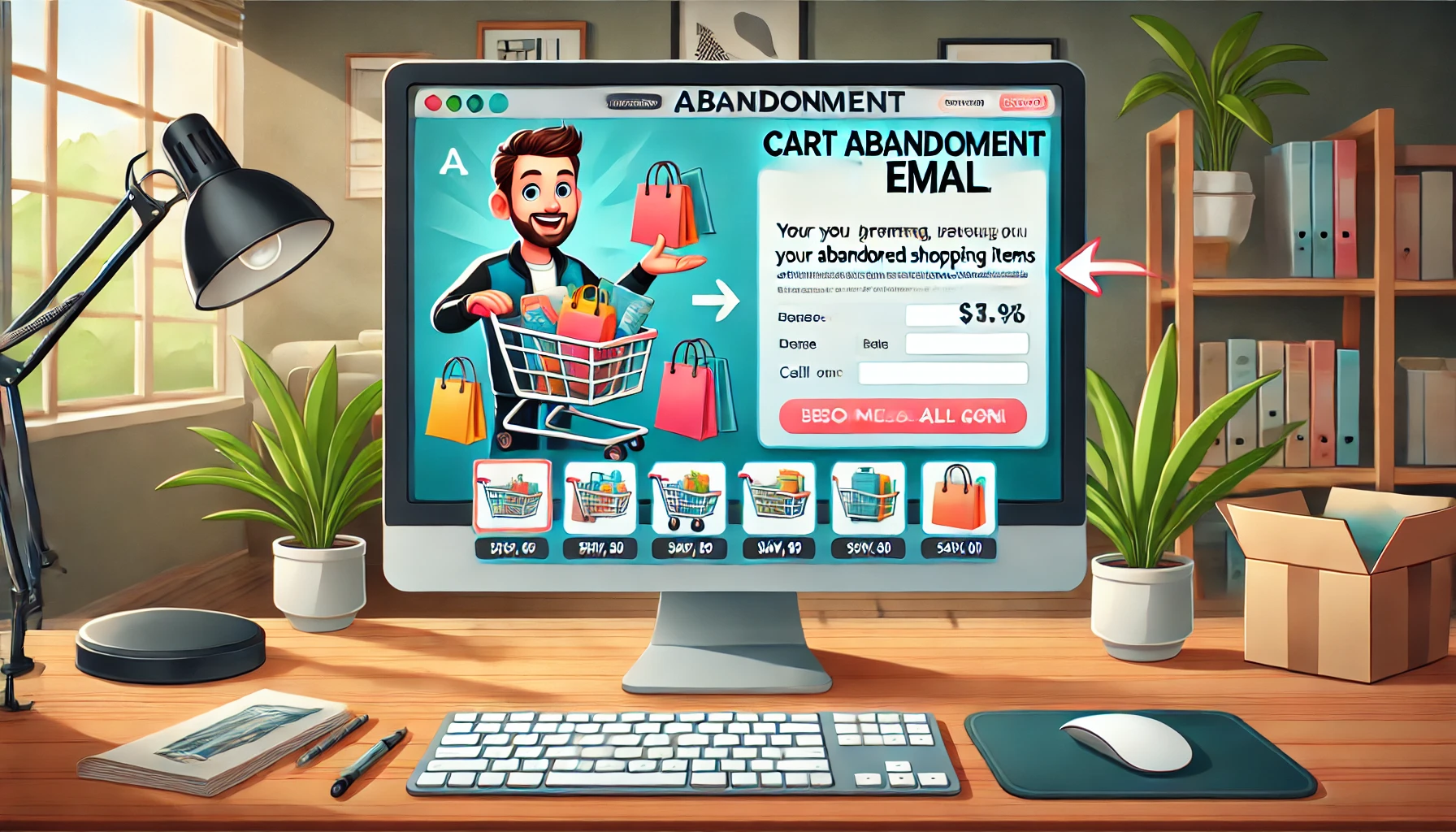As an online retailer, one of the biggest challenges I face is dealing with shopping cart abandonment. It’s a tough issue, and according to the Baymard Institute, it’s here to stay, with the average online shopping cart abandonment rate standing at 68.63%.
But, there’s no need to feel defeated. There are practical steps you can take to reduce these rates, such as implementing cart abandonment emails and diversifying payment options. Here’s how you can make those emails work hard for you:
Crafting the Ultimate Cart Abandonment Email
The first step is understanding what makes a cart abandonment email successful. Here’s what you should include:
1. Catchy Subject Line: This is your first impression, so make it count! A subject line that grabs attention can be the difference between an opened email and one that’s ignored.
2. Personalized Introduction: Starting the email with a personal touch can make customers feel valued. Use their name and acknowledge their unique choices.
3. Detailed Breakdown of Abandoned Items: Remind them what they’re missing out on by listing the items left in their cart. This visual reminder can tempt them to return.
4. Strong Call-to-Action (CTA): Your CTA should be clear and compelling. Encourage them to complete their purchase with a simple, straightforward button or link.
5. Product Reviews: Including positive reviews or ratings of the abandoned items can boost confidence in their choice, nudging them towards completing the purchase.
Timing Is Crucial
When it comes to sending out cart abandonment emails, timing can make a huge difference. Research from SalesCycle showed that for 200 global brands, emails sent within 20 minutes had a conversion rate of about 5.2%, while those sent after 24 hours only converted at 2.6%. It’s crucial to act fast.
I’ve found it effective to set up an email campaign that sends reminders at strategic times: immediately after abandonment, then 24 hours later, and finally at 48 hours. Remember not to overdo it, though. I limit these follow-ups to three or four before letting the customer know their cart will expire.
Crafting Compelling Content
The content of your email is just as vital as its timing. It starts with a subject line that grabs attention. You want to make sure it speaks to what your brand stands for, creates a sense of urgency, and rekindles the excitement the customer felt initially.
For instance, a subject line like “Hey, Jessica! You forgot how much you wanted to buy this!” not only personalizes the message but also reminds Jessica of her initial interest in the products.
In the body of the email, it’s important to echo your brand’s voice and clearly communicate the main points. The flow of the content should remind the customer that they left an item they were interested in in their cart and encourage them to complete their purchase.
Another effective tactic is to suggest related items. Showing customers images of other popular or related products can re-engage them, making it easier for them to decide to return and perhaps even explore more of what your site offers. This approach doesn’t just aim to recover abandoned carts; it also enhances the overall shopping experience by simplifying product discovery.
Clear and Direct Calls-to-Action
In any cart abandonment email, the goal is straightforward: I want the customer to return and complete their purchase. The calls-to-action (CTAs) I choose are critical in guiding them back. Some effective CTAs I use include:
- Claim My Item
- Continue Shopping
- Take Me Back to My Basket
- Complete My Order
These phrases are designed to be clear and compelling, making it as easy as possible for customers to understand what steps to take next.
Additional Strategies to Prevent Cart Abandonment
Minimizing cart abandonment begins with understanding why it happens. Here are some strategies I’ve implemented to keep abandonment rates low:
1. Visual Product Reminders: Including photos of the items left in the cart can reignite the customer’s interest and visually remind them what they’re missing.
2. Transparent Shipping Costs: I always make sure to be upfront about shipping costs to avoid any last-minute surprises that might deter a customer.
3. Guest Checkout Option: Not everyone wants to create an account, so offering a guest checkout option can speed up the process and reduce friction.
4. Seamless Navigation: It’s important that moving between shopping pages and the shopping cart is intuitive and quick. Any hiccups here can lead to frustration and abandonment.
5. Money-Back Guarantee: Offering a money-back guarantee can alleviate any fears about purchasing. It shows that I stand behind my products and adds a layer of trust.
By focusing on these areas, I not only encourage customers to complete their current purchase but also enhance their overall shopping experience, making them more likely to return in the future.
Conclusion
Efficiently managing cart abandonment is more than just a necessity—it’s an opportunity to re-engage customers and enhance their shopping experience. By employing strategic timing, crafting engaging content, and setting clear calls-to-action, online retailers can significantly decrease cart abandonment rates.
Frequently Asked Questions (FAQs):
How quickly should I send a cart abandonment email?
Ideally, send the first email within 20 minutes of abandonment to maximize the conversion rate.
What should be included in a cart abandonment email?
Include a catchy subject line, a personalized greeting, a breakdown of the abandoned items, a strong call-to-action, and positive product reviews.
Why is it important to include images of abandoned products in the email?
Images visually remind the customer of what they were interested in and help rekindle their desire to purchase.
How can I further reduce cart abandonment rates?
Offer transparent shipping costs, provide a guest checkout option, ensure seamless navigation, and offer a money-back guarantee to build trust and reduce purchase hesitations.












